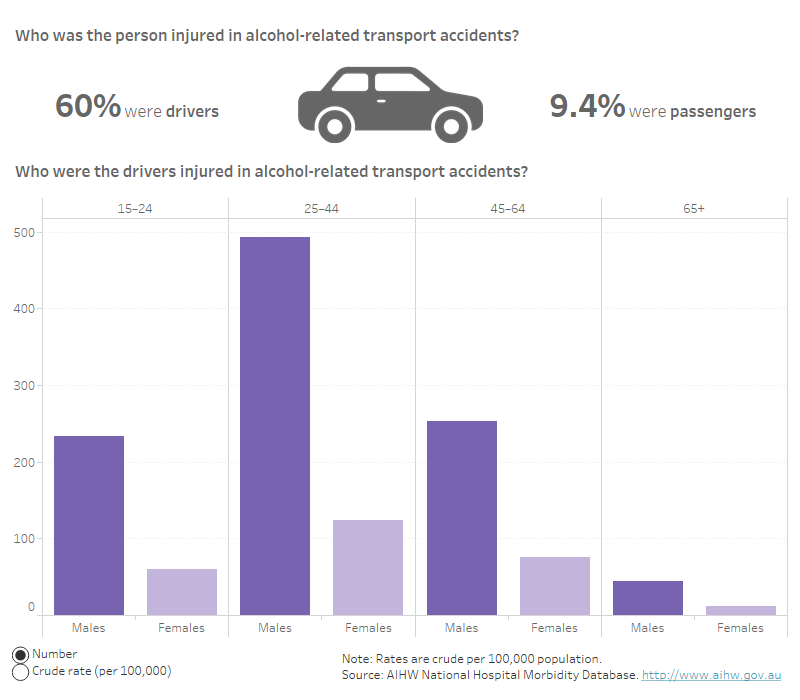Transport
In 2019–20, there were almost 2,200 alcohol-related transport injury hospitalisations. People in cars made up almost half (49%) of all alcohol-related transport injury hospitalisations, followed by motorcyclists (17%), pedal cyclists (13%) and pedestrians (10%).
Males accounted for 77% of alcohol-related transport injury hospitalisations. The proportion of alcohol-related hospitalised injuries is higher than for all transport injuries, where males accounted for 67% of hospitalisations. Males were 3.5 times as likely as females to be hospitalised for a transport-related injury (13 per 100,000 compared to 3.8 per 100,000, respectively).
For both sexes, people aged 15–24 had the highest rate of alcohol-related transport injury hospitalisations (16 per 100,000 population).
Role of person injured
Some information about the role of the person in a transport accident is included in the data, for example it may be possible to identify if the person was a passenger, driver, pedestrian or cyclist. Of the 2,200 transport cases, driver (1,300 cases, 60%) was the most common role (Figure 8), partly due to the fact that a car must have a driver, but may or may not have passengers. The crude rates for the person injured in transport accidents varied between sexes and age groups:
- the rate was highest in the 15–24 age group when the person injured was the driver or passenger
- males aged 15–24 who were the driver had the highest rate (14 cases per 100,000); they were 3.7 times as likely to be hospitalised as their female counterparts (3.8 cases per 100,000).
Figure 8: Number and rate of drivers hospitalised due to alcohol-related injury, by sex and age group, 15 years and over, 2019–20
Drivers were the most common person injured. The bar graph shows the highest rates of drivers injured from alcohol-related transport accidents were males aged 15–44.

The next most common roles of people hospitalised due to a transport accident were pedestrian (10%, 225 cases) and passenger (9%, 205 cases).
For more detailed data, see Data tables A18–21.


